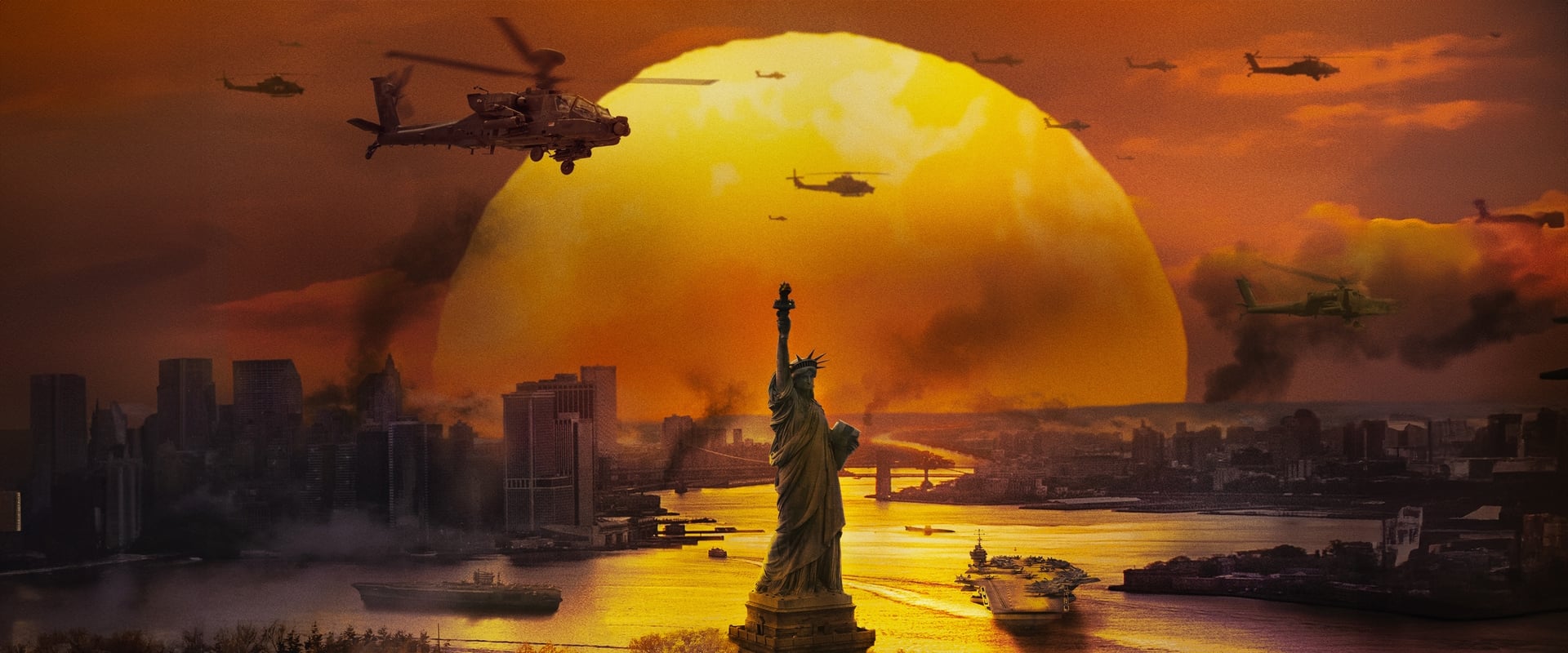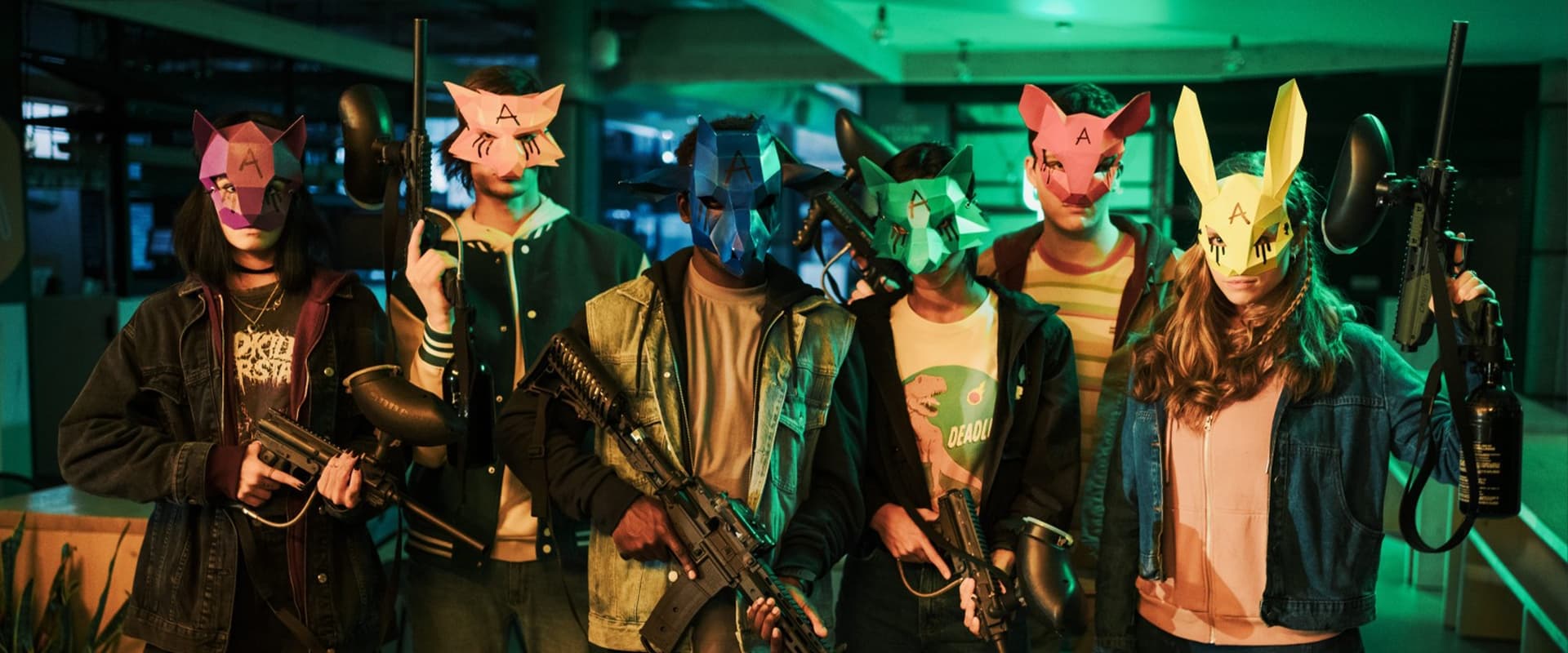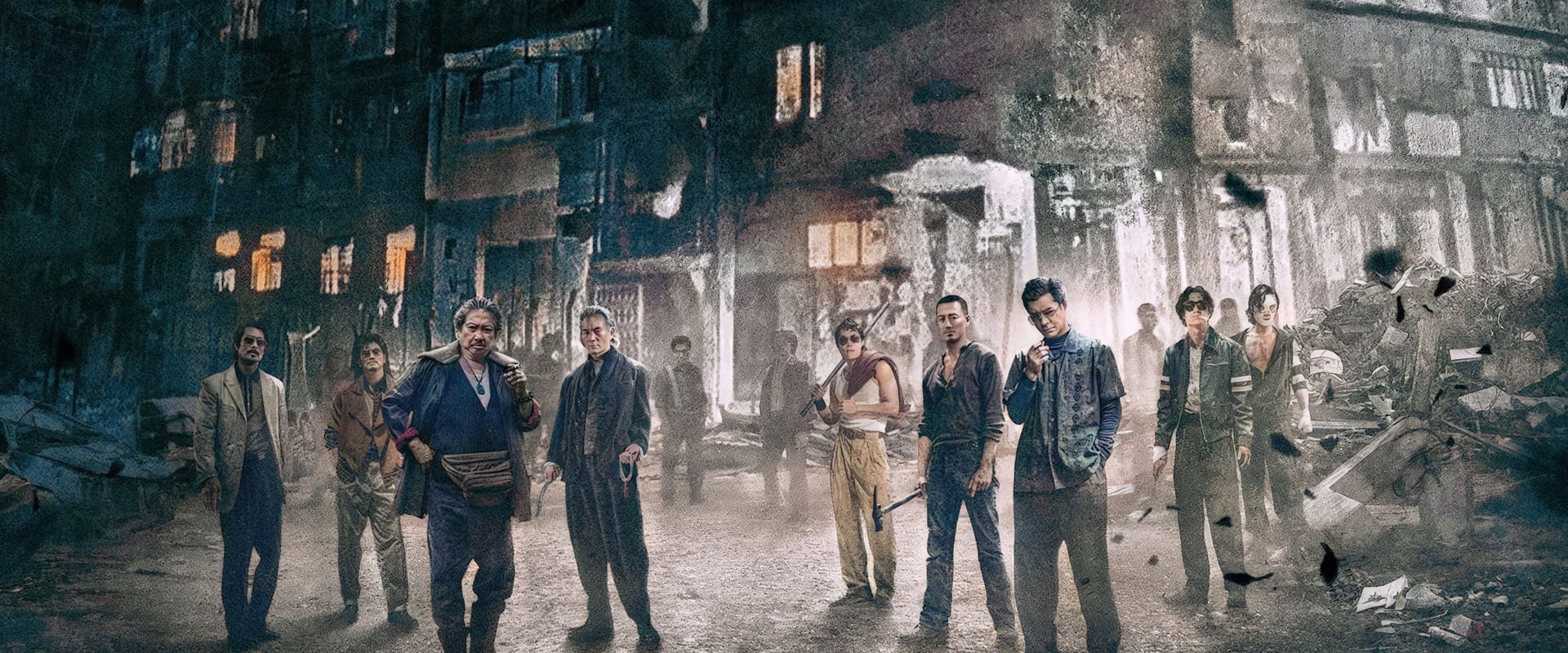Civil War is less a movie than a diagnosis—the kind you receive in a stranger’s waiting room, where the tick of the clock and the hum of distant sirens seem to foretell something terminal, but you’re too mesmerized to get up and leave. Alex Garland looks at America as if it’s an elegantly set table that’s just been upended; the film drags you headlong through the debris, offering glimpses of the familiar and the ghastly, fused and inseparable, seen through the battered lenses of war correspondents.
Right from the jump, I could tell Civil War wasn’t interested in the mechanical pleasures of the bullet ballet or the heavy-breathing suspense that this kind of “thriller” usually lumbers toward. Garland opens a bleeding vein and asks us to watch it spatter, assembling a road trip through national nervous breakdown. From the moment the battered press van pulls away from New York—well, I was hooked, and not in the happy-clappy sense but in the way a throbbing tooth hooks you to your own mortality. Every frame is freighted with the kind of unease that makes you stop smirking about “bad headlines” and start watching for cracks in your own apartment walls.
Garland doesn’t hold your hand or sketch in a cartoon villain list for us to jeer at; the world is already on fire, and the only map he offers is the burned-out highway from New York to D.C. This refusal to serve up exposition like a cold side dish is what kept me nailed to my chair—encouraging, or rather, forcing, the audience to fill in the blank spaces with our own cultural anxieties. The result: a portrait of disintegration that feels so authentic, so chokingly possible, that you find yourself shivering—not with delight, but with the queasy thrill of recognition.
Kirsten Dunst as Lee, the war photographer, has a face that’s learned to swallow its own grief. You can see the history etched there—the sort that doesn’t need a flashback montage. She carries her camera like a shield and a confession; her exhaustion is so present it climbs off the screen and sits beside you. Dunst has a spooky transparency that Garland wisely lets breathe—she makes the cost of documenting trauma as vivid as the trauma itself, and you believe her. Beside her, Cailee Spaeny’s Jessie is the innocent hurtling at 200 miles an hour into the brick wall of experience. Her arc—the zeal to bear witness mutating into silent horror—is the quiet tragedy at the movie’s heart. I watched her—part eager cub, part accidental ghoul—and felt hope and dread fold over each other like two sides of a blood-stained coin.
Wagner Moura plays Joel with a kind of feral, nervy bravado that acts as an emotional wild card—here’s a character who uses irony the way field medics use morphine: patch up quick, keep moving, don’t think about the bodies piling up in the rearview. The entire supporting cast hums with recognizable fractures—nobody’s a pure hero or villain, and that ambiguity is the film’s beating pulse. It’s rare for a movie to let its journalists be as ethically messy as its soldiers, and Garland has the good sense not to romanticize or moralize. When they laugh, you almost wince.
Violence in Civil War is not the stylized comic-book mayhem you find in Saturday night entertainments. No—here, the gunshots land with the intimacy of a heart palpitation. By the time Garland’s camera stares down the lens at scenes of carnage, the question isn’t “Why are we watching?” but, more chillingly, “What does it mean to watch in the first place?” The journalists are cursed with the role of chroniclers: they must witness, must record—even as bearing witness becomes its own kind of complicity. When does watching tip over into participating? Garland doesn’t answer, but he makes sure you squirm with the possibilities.
The real aesthetic knockout comes from the film’s visual and aural language. There’s a burnt, haunted quality to the cinematography—America as both battlefield and mausoleum. You look at these frames and think: This was your street, your mall, your childhood river—now rendered alien and obscene. The sound design isn’t just effective, it’s physiological; every ricochet, every vacuum-silence after an explosion, is like a sonic aftershock traveling through your chest. The score is as spare as an open wound—melancholy, jarring, and never manipulative, it colors the movie with a constant, low-grade distress.
What floored me, though, is how Civil War refuses tidy resolutions. Garland isn’t peddling uplift, or even catharsis. He wants you to live with the hangover, to walk out and wonder: What have we allowed to rot? His narrative isn’t so much a warning as an autopsy, the kind that asks the mourners to ID the body—and won’t let you look away until you do. Our little comforts—stability, trust—are shown to be paper-thin.
This is a movie that challenges you to check your own reflection for cracks. The horror isn’t in the action—it’s in the aftermath, in the lives left stranded on the other side of catastrophe. If there’s a lesson here, it’s that the first casualty of violence is not just civility or order, but empathy itself. We become less of ourselves with every unburied wound.
I finished the movie feeling newly awake to the razor-thin membrane separating “us” from “them,” order from collapse. Civil War offers no velvet-mitten reassurances; instead, it drags you by the collar through the mud and makes you feel the stakes. That’s what lingers—the ugly, pulsing awareness that we’re all just one careless spark from the edge.
In a landscape littered with bombastic dystopias, Garland’s film has the audacity to feel like a premonition. It’s an urgent dispatch for anyone still capable of empathy, and a dare to everyone else. You don’t just watch Civil War—you come out of it with your knuckles a shade whiter and your faith in narrative safety badly bruised. If you care about where we are headed, you owe yourself—maybe even your neighbor—a ticket to this shattering ride.
The movie isn’t just about what happens when a nation cracks. It’s about what happens when ordinary people find themselves reporting from the inside of the fracture. Garland has made a film that ought to follow you out of the theater like a sleepless shadow. See it, and bring someone you’re willing to argue with on the walk home.


